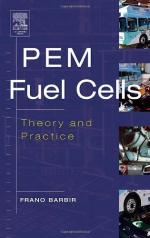|
This section contains 316 words (approx. 2 pages at 300 words per page) |
Modern cell theory asserts that all living things are made of basic structural units termed cells. Moreover, living cells arise only from other living cells. Cells also function as the basic physiological unit of living things. Cells, as a basic structural and functional unit, mirror and support the processes apparent in the whole organism.
The term cell was first used by the English scientist Robert Hooke (1635-1703), who, in the mid-seventeenth century, used the term to describe the structure of cork. Shortly thereafter, the Dutch scientist Anton van Leeuwenhoek (1632-1723) made the first recorded observations of bacterial cells (termed "animalcules" by Leeuwenhoek) in scrapings taken from hiss own teeth. In the 1830's, German botanist Matthias Schleiden (1804-1881) served that plants were composed of cells, and within a year German zoologist Theodor Schwann (1810-1882) extended Schwann's assertions to assert that animals were also composed of fundamental cellular units or cells.
Schwann was the first to assert a modern form of cell theory. Schwann asserted that both plants and animals are composed entirely of cells or the fluid products of cells. Schwann also asserted that cells not have structural integrity but also a separate internal physiology. In multi-cellular organism, however, this internal cellular physiology functioning in a supportive and coordinated role with the cell comprising the organism as a whole.
In the mid-nineteenth century, the German physician Rudolph Virchow's (1821-1902) embryological work demonstrated that living cells could arise only from other living cells (biogenesis), and not from inanimate matter (abiogenesis). Virchow's assertion, "Omnis cellula e cellula" (All cells from cells) was the basis upon which French scientist Louis Pasteur (1822-1895) was later to fully extend cell theory--and in the process quash centuries of speculation regarding spontaneous generation (the generation of modern living organisms from inanimate matter) and provide a tremendous boost to evolutionary theory by demonstrating that living organisms arise only from living organisms.
|
This section contains 316 words (approx. 2 pages at 300 words per page) |


